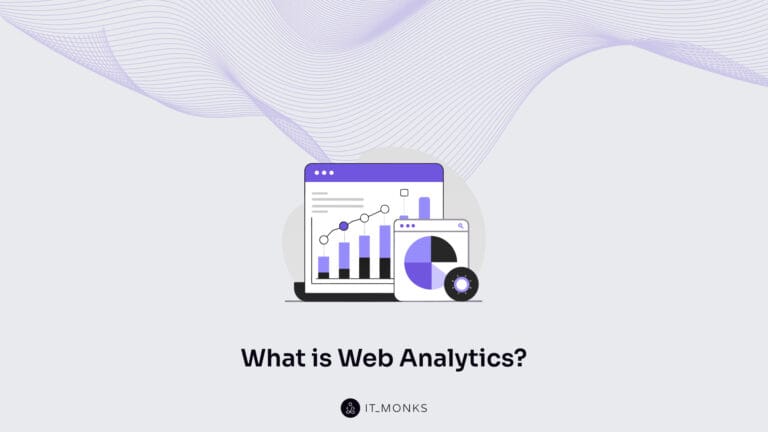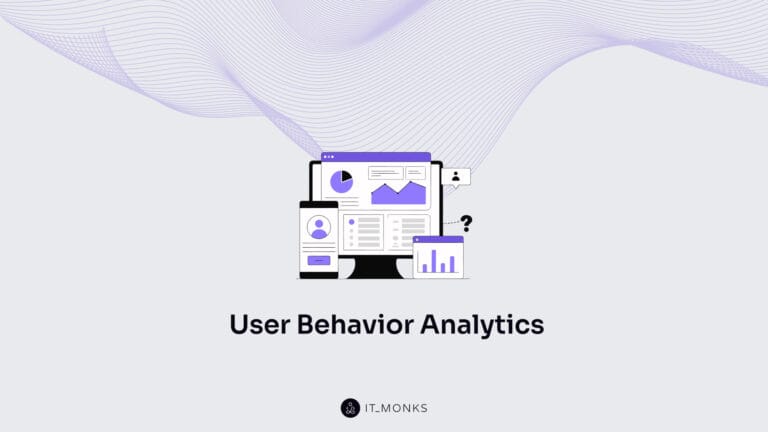TOP 10 Free Ecommerce APIs
Table of Contents

Ecommerce has transformed how businesses operate and reach customers. One of the critical enablers of this transformation is the Application Programming Interface (API). Ecommerce APIs allow different software systems to communicate and share data seamlessly, facilitating a smooth and integrated user experience. This article explores the top 10 free ecommerce APIs available to developers, helping you build robust and feature-rich online stores without incurring high costs.
What is an Ecommerce API?
Ecommerce API enables different software applications to communicate and exchange data within an ecommerce environment.
Ecommerce APIs play a crucial role in the digital commerce ecosystem by acting as intermediaries that allow different software systems to interact. They enable the integration of various functionalities, such as product management, order processing, and adding payment gateway for WooCommerce, which are essential for running a successful online store.
It facilitates communication between different software systems by providing a set of rules and protocols. When one software application sends a request to an API, the API processes the request and returns the desired data or performs the requested action. This interaction allows different systems to work together harmoniously, ensuring that all parts of the ecommerce platform function seamlessly.
Ecommerce APIs offer a range of functionalities that are vital for managing an online store. Some of the typical functionalities include:
- Product Management: APIs allow for adding, updating, and deleting products. They can also manage product categories, attributes, and inventories.
- Order Processing: APIs facilitate handling customer orders, tracking shipments, and managing returns. This ensures a smooth transaction process from order placement to delivery.
- Payment Integration: APIs enable secure payment transactions through various payment gateways. They support multiple payment methods and currencies, providing customers with flexibility.
Benefits of Using Free Ecommerce APIs
Leveraging free online shop APIs can provide significant business advantages, particularly for startups and small enterprises. Here are some key benefits:
Cost-effectiveness
Free ecommerce APIs eliminate the need for initial investment in expensive software solutions. This cost-effectiveness is particularly beneficial for small businesses and startups with limited budgets. Free APIs provide access to essential functionalities without the financial burden, allowing companies to allocate resources to other critical areas.
Flexibility and Scalability
Free e-commerce APIs offer flexibility and scalability, making adapting to different business needs easy. As the business grows, the API can accommodate increased traffic and additional functionalities without requiring a complete system overhaul. This scalability ensures that the e-commerce platform can evolve with the business.
Accelerated Development
Free ecommerce APIs come with pre-built functionalities that save web design vs web development time. Developers can integrate these APIs into their platforms quickly, reducing the time needed to build and launch an ecommerce site. This accelerated development process allows businesses to get their products to market faster and stay ahead of the competition.
Community Support
Using free ecommerce APIs often grants access to a community of developers who use the same APIs. This community support can be invaluable for troubleshooting issues, sharing best practices, and collaborating on enhancements. Engaging with a community of like-minded developers fosters innovation and continuous improvement.
Best Free Ecommerce APIs
Free ecommerce APIs offer a cost-effective way to integrate various functionalities into your platform, from payment processing to product management. Below, we delve into some of the best free online shop APIs available, detailing their key features, strengths, and limitations.
1. WooCommerce
WooCommerce API is an open-source API designed for WordPress users. It allows seamless integration with the WooCommerce plugin to create and manage online stores.
Key Features:
- Easy integration with WordPress.
- Comprehensive product management, including categories, attributes, and tags.
- Order processing and inventory management.
- Secure payment gateways and multiple shipping options.
- Extensive support for custom fields and product variations.
Strengths:
- Large community support and extensive documentation.
- Highly customizable with numerous themes and plugins.
- Ideal for small to medium-sized businesses.
- Regular updates and improvements from the developer community.
Limitations:
- Requires a WordPress environment.
- Can be resource-intensive and may require optimization for high-traffic sites.
- Some advanced features may require premium extensions.
2. PayPal
PayPal API is a widely used payment gateway that allows secure transactions in various currencies, making it an essential tool for global ecommerce.
Key Features:
- Supports multiple payment methods, including credit cards, debit cards, and PayPal accounts.
- Provides instant payment notifications and detailed transaction history.
- Offers features for recurring billing and subscription management.
- Facilitates one-touch payments for quicker transactions.
- Robust fraud detection and buyer protection.
Strengths:
- Trusted and recognized worldwide, ensuring customer confidence.
- Strong security measures and fraud protection.
- Comprehensive developer documentation and support.
- Easy integration with various ecommerce platforms.
Limitations:
- Transaction fees apply for each payment processed.
- May not be available in some countries.
- Some advanced features may require a business account.
3. Amazon API
Amazon API provides access to Amazon’s extensive ecommerce platform, allowing sellers to list products, manage orders, and access various tools for ecommerce management.
Key Features:
- Product listing and catalog management.
- Order and inventory management.
- Access to Amazon’s fulfillment network and customer service.
- Integration with Amazon Marketplace Web Service (MWS) for advanced functionalities.
- Detailed sales and performance reporting.
Strengths:
- High scalability and reliability.
- Extensive reach and access to a large customer base.
- Detailed documentation and support from Amazon.
- Robust infrastructure and security measures.
Limitations:
- Requires compliance with Amazon’s policies and guidelines.
- Competitive marketplace can be challenging for new sellers.
- Some features may require a professional seller account.
4. API2Cart
API2Cart is a unified API connecting multiple ecommerce platforms, enabling developers to manage various ecommerce operations from a single interface.
Key Features:
- Integration with multiple platforms like Shopify, Magento, WooCommerce, and more.
- Centralized data management for products, orders, and customers.
- Real-time synchronization of data across platforms.
- Supports complex business logic and workflows.
- Detailed error handling and logging.
Strengths:
- Simplifies the process of multi-platform integration.
- Saves time and effort with centralized management.
- Extensive support and detailed API documentation.
- Scalable solution for growing businesses.
Limitations:
- Can have a learning curve for beginners.
- Some advanced features may require a paid plan.
- Dependent on the availability and performance of connected platforms.
5. Big Cartel
Big Cartel API is tailored for artists and makers, offering simple tools to create and manage an online store easily.
Key Features:
- User-friendly interface for setting up and managing stores.
- Customizable store templates.
- Product and order management features.
- Integration with various payment gateways.
- Basic analytics and reporting tools.
Strengths:
- Ideal for small-scale sellers and creative entrepreneurs.
- Simple and intuitive to use.
- Free plan available with basic features.
- Focused on supporting independent artists and small businesses.
Limitations:
- Limited scalability for larger businesses.
- Fewer advanced features compared to other ecommerce platforms.
- Limited customization options for advanced users.
6. Volusion
Volusion API provides various tools for building and managing online stores, with product management, order processing, and customer data management features.
Key Features:
- Comprehensive product management, including product categories, SKUs, and inventory tracking.
- Order processing and management, including order status updates and shipment tracking.
- Customer relationship management (CRM) tools to manage customer information and interactions.
- Secure payment processing with various payment gateways.
- Built-in SEO tools to optimize product listings for search engines.
Strengths:
- Strong security features and data protection to ensure safe transactions.
- Easy to use and set up, making it accessible for small and medium-sized businesses.
- Good customer support with extensive documentation and community forums.
- Integrated marketing tools to help promote products and drive sales.
Limitations:
- Limited customization options compared to other platforms, which may restrict advanced users.
- Some features may require a paid plan, which can constrain budget-conscious businesses.
- Can be less flexible in integrating third-party applications compared to open-source alternatives.
7. Adyen Checkout
Adyen Checkout API offers a robust solution for integrating various payment methods into ecommerce platforms, ensuring secure and efficient transactions.
Key Features:
- It supports various payment methods, including credit cards, debit cards, and digital wallets.
- Real-time transaction monitoring and fraud detection to enhance security.
- Detailed reporting and analytics to track payment performance.
- Multi-currency support to facilitate international transactions.
- Easy integration with major ecommerce platforms and customizable checkout experiences.
Strengths:
- High level of security and fraud protection, ensuring safe transactions.
- Global payment support, making it suitable for businesses with an international customer base.
- Extensive documentation and developer support to assist with integration and troubleshooting.
- Reliable and scalable, capable of handling high transaction volumes.
Limitations:
- It requires understanding payment processing complexities, which may be challenging for beginners.
- Transaction fees apply, which can add up for high-volume transactions.
- Some advanced features may require a more in-depth setup and configuration process.
8. Fake Store API
Fake Store API is a free API that provides dummy product data, allowing developers to test and develop ecommerce applications without using actual data.
Key Features:
- Provides fake product data, including names, prices, images, and descriptions.
- Supports various product categories and attributes to mimic real-world data.
- Easy to use and integrate with development projects.
- No authentication required, allowing quick access to data for testing purposes.
Strengths:
- It is ideal for development and testing, eliminating the need for real data.
- Straightforward API, making it easy to integrate.
- Reduces privacy concerns by using fake data.
- Completely free to use with no limitations on data requests.
Limitations:
- Not suitable for production environments as it only provides test data.
- Limited to providing basic product data, needing more advanced features.
- Data is static and may not cover all possible use cases for testing.
9. Kite
Kite API enables print-on-demand services, allowing businesses to sell custom-printed products directly from online stores.
Key Features:
- Integration with major ecommerce platforms such as Shopify, WooCommerce, and BigCommerce.
- Wide range of customizable products including apparel, home decor, and accessories.
- Automated order fulfillment and shipping, streamlining the order process.
- Real-time order tracking and notifications for customers.
- Easy-to-use design tools for product customization.
Strengths:
- Simplifies print-on-demand services, reducing the need for inventory management.
- High-quality printing and a wide variety of products to choose from.
- Scalable solution suitable for small businesses to large enterprises.
- Excellent support and detailed documentation to assist with integration.
Limitations:
- Limited to print-on-demand products, which may not suit all business types.
- Fulfillment times may vary based on product type and location, affecting delivery speed.
- Some advanced features may require a paid plan or higher tier subscription.
10. Square API
Square API offers a suite of tools for payment processing, point-of-sale (POS) solutions, and ecommerce integration, making it a versatile choice for various business needs.
Key Features:
- Comprehensive payment processing supporting various methods including credit cards and digital wallets.
- Integration with Square’s POS system for seamless in-store and online sales.
- Detailed reporting and analytics to track sales performance and customer data.
- Inventory management tools to keep track of stock levels and product details.
- Customer relationship management features to manage customer interactions and loyalty programs.
Strengths:
- Versatile and scalable solution suitable for both online and offline sales.
- Strong security features and fraud protection to ensure safe transactions.
- Extensive developer documentation and support to facilitate integration.
- Flexible pricing with no long-term contracts, making it accessible for businesses of all sizes.
Limitations:
- Transaction fees apply for payment processing, which can impact profit margins.
- Some advanced features may require a paid plan or subscription.
- It may require additional setup and configuration for certain integrations and customizations.
How to Get Started with a Free Ecommerce API
Choosing and integrating a free ecommerce API can significantly enhance the functionality of your online store. Here’s a step-by-step guide to help you get started.
Step-by-Step Guide on How to Choose the Right API
Step 1: Identify Your Requirements
- Functionality: Determine the specific features you need, such as payment processing, product management, WooCommerce inventory management, or order processing.
- Scalability: Consider how well the API can scale with your business growth. Ensure it can handle increasing traffic and transaction volumes.
- Compatibility: Check if the API is compatible with your current technology stack, including your ecommerce platform, programming languages, and frameworks.
Step 2: Research Available APIs
- Documentation: Evaluate the quality and comprehensiveness of the API documentation. Good documentation should provide clear instructions, examples, and troubleshooting tips.
- Community and Support: Look for APIs with active developer communities and strong support channels. Community forums, user groups, and official support can be invaluable resources.
- Security: Assess the security features of the API, such as data encryption, authentication mechanisms, and compliance with industry standards (e.g., PCI DSS for payment APIs).
Step 3: Evaluate Performance and Reliability
- Uptime and Availability: Check the API’s uptime history and service level agreements (SLAs) to ensure it offers reliable performance.
- Latency: Consider the response times of the API, as high latency can affect the user experience on your site.
Step 4: Test the API
- Sandbox Environment: Many APIs offer a sandbox or test environment where you can experiment without affecting your live data.
- Trial Periods: Take advantage of any free trials or limited-time offers to test the API’s features and performance in real-world scenarios.
How to Get API Keys and Start Making Requests
- Sign Up for an Account. Visit the API provider’s website and sign up for an account. This usually involves providing basic information and verifying your email address.
- Access the Developer Portal. Once registered, log in to the developer portal or dashboard provided by the API provider.
- Generate API Keys. Navigate to the section where you can generate API keys. This is typically found under account settings or a dedicated API management section. Create a new API key. You may be asked to provide a name or description for the key to help you manage multiple keys.
- Configure API Settings. Review and configure any necessary settings, such as IP restrictions, rate limits, or access permissions.
- Start Making Requests. Use the API key to authenticate your requests. Most APIs use HTTP headers or query parameters to include the API key in your requests. Refer to the API documentation for specific request instructions, including endpoints, methods (GET, POST, PUT, DELETE), and required parameters.
How to Integrate API into Your Existing Ecommerce Platform
Step 1: Use Official SDKs and Libraries
Many API providers offer official software development kits (SDKs) and libraries for popular programming languages. Using these can simplify the integration process and ensure compatibility.
Step 2: Follow Best Practices
- Modular Code: Write modular and reusable code to make it easier to maintain and update.
- Error Handling: Implement robust error handling to gracefully manage API response errors and exceptions.
- Logging: Log API requests and responses for debugging and monitoring purposes.
Step 3: Secure Your API Keys
- Environment Variables: Store API keys in environment variables or configuration files not included in your version control system.
- Access Controls: Use least privilege principles to limit API keys and sensitive data access.
Step 4: Test Thoroughly
- Unit Testing: Write unit tests for your ecommerce API integrations to ensure they function correctly.
- End-to-End Testing: Perform end-to-end tests to validate the complete data flow and API interactions.
Step 5: Monitor API Usage:
- Analytics: Use analytics tools to monitor API usage, performance, and errors.
- Alerts: Set up alerts for unusual activity or errors to proactively address issues.
Best Practices for Using Ecommerce APIs
Using ecommerce APIs effectively requires adhering to best practices to ensure security, performance, and maintainability. Here are key considerations and strategies to follow:
Security Considerations
- Confidentiality: Treat API keys like passwords. Never expose them in your client-side code, version control systems, or public repositories.
- Environment Variables: Store API keys in environment variables or secure configuration files. This practice keeps them separate from your codebase and reduces the risk of accidental exposure.
- Access Control: Use role-based access control (RBAC) to limit API key usage to specific services or users. Generate separate keys for different parts of your application as needed.
- HTTPS: Ensure all API requests are made over HTTPS to encrypt data in transit and protect it from interception and tampering.
- Sensitive Data: Encrypt sensitive data such as credit card numbers, personal information, and authentication tokens both in transit and at rest.
- OAuth: Use OAuth for secure authorization when possible. OAuth provides a robust framework for handling access tokens and permissions.
- Token Expiry: Implement token expiration and refresh mechanisms to enhance security and prevent misuse.
Rate Limiting and Handling API Response Errors
- API Quotas: Be aware of the API rate limits and quotas the provider sets. Exceeding these limits can result in temporary bans or throttled access.
- Backoff Strategies: Implement exponential backoff strategies to handle rate limit errors gracefully. When an error occurs due to rate limiting, wait a progressively longer before retrying the request.
- HTTP Status Codes: Check the HTTP status codes returned by the API to determine the success or failure of a request. Handle different status codes appropriately. (200-299: Success; 400-499: Client errors (e.g., bad request, unauthorized); 500-599: Server errors (e.g., internal server error, service unavailable)
- Retry Logic: Implement retry logic for transient errors like network issues or server timeouts. Ensure retries are limited to avoid overwhelming the server.
Keeping the API Documentation Handy for Troubleshooting
- Always have the latest API documentation available. Documentation provides crucial information about endpoints, request parameters, response formats, error codes, and usage examples.
- Bookmark the documentation site or download a local copy if available. This ensures you can quickly refer to it during development and troubleshooting.
- Use API reference guides and example code snippets provided in the documentation. These can help you understand how to implement specific functionalities and best practices.
Staying Updated with API Version Changes and Updates
- Understand your provider’s API versioning policy. Use version-specific endpoints to ensure your integration remains stable even if the API evolves.
- Regularly check for new versions and updates. Subscribe to provider notifications or newsletters to stay informed about changes, deprecations, and new features.
- Test your application against new API versions in a staging environment before deploying to production. This helps identify and address any breaking changes or compatibility issues.
- Monitor provider announcements to plan for API deprecations. Allocate time to update your integration and test thoroughly before removing deprecated features.
Conclusion
Integrating free ecommerce APIs into your online store can provide significant benefits, from enhancing functionality to improving user experience. You can ensure a smooth and efficient integration process by following best practices for security, rate limiting, error handling, and staying updated with documentation and API changes. These steps will help you leverage the full potential of ecommerce APIs, driving growth and success for your business.
At IT Monks, we are experts in helping businesses streamline workflows and upgrade user experiences by developing seamless digital solutions through API integrations. If you are seeking professional help with connecting CRMs, payment gateways, geolocation services, cloud platforms, and messaging systems, fill in a brief form below and we’ll reach you back to discuss your project details.
Contact
Don't like forms?
Shoot us an email at [email protected]




